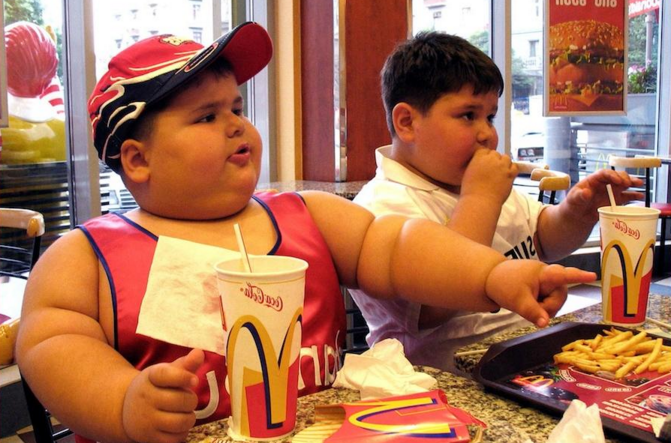Fat Tax - Fighting the Obesity Epidemic

According to the results of the study published in Marketing Science - the journal of the publishing house of the Institute for the Study of Operations and Management Sciences (INFORMS), a slight difference in price can play a decisive role when buying products, forcing consumers to choose less high-calorie useful products instead of high-calorie ones.
In particular, low-income consumers, as a rule, are sensitive to such a barely noticeable decrease in the cost of products, among which cases of obesity are most common. Moreover, it is very important to take such economic measures, because they act on the principle of a kind of "tax on fat." Such conclusions were voiced by experts, over the course of 6 years studying the sales data of more than 1,700 US supermarkets.
The study, “Will the Fat Tax Work?” Is authored by professors Roman Khan of Northwestern University, Kanishka Mishra of the University of Michigan, and Vishal Singh of Stern School of Business at New York University.
The study is based on a kind of pricing policy that determines the price of milk in the United States, where relative prices for products of different fat content - whole, 2%, 1% and low fat - vary depending on the area and on which stores you go to most often. In some stores, the same prices for milk of all types of fat are set; on the shelves of others, the higher the fat content, the higher the cost, and, accordingly, whole milk is the most expensive, and skim, on the contrary, the cheapest.
Study co-author Roman Khan is interested in: “The question is: do such prices influence consumer choice? Simply put, will people buy less fat milk with an insignificant difference in cost, say, 15 cents per gallon? ” And it’s very interesting to find out the answer to the question, because it is directly related to the ongoing discussions on the possible introduction of a “tax” on fat or sugar as measures to combat obesity. "
Thanks to the study, it was possible to find out that in markets where all types of milk are the same, preference is given to whole rather than low-calorie products, especially when it comes to rather poor areas: with equal prices for milk of different fat contents, the market share of whole milk in areas with low income of the population is 52% compared with 25% in more prosperous regions. How does the situation change if whole milk is much more expensive? Despite a barely noticeable difference in price, at only 14 cents per gallon (5%), there is a sharp shift in market share as a result of the transition from whole to low fat milk. Such trends, characterized by a choice in favor of low-calorie foods, are more noticeable in poor areas.
In addition to the income level, other factors were taken into account: age, race and level of education of the local population.
One of the most important factors during the analysis was the revealed pattern, according to which the prevailing pricing policy - regardless of whether the milk prices of different fat contents were the same or disproportionate - was dictated by the leadership of regional chain stores and does not change depending on the demographics of the area or existing competition.
According to Kanishka Mishtra: “In this way we get a quasi-experimental base that allows us to find out how a slight difference in price affects people's choices. Most often, studies devoted to similar issues analyze small groups of the population, for example, students. But we conducted an experiment in real conditions, taking as information the sales data for the whole country over a long period, which allowed us to consider the possible consequences of the potential adoption of the "fat tax" and analyze long-term trends in consumer demand in this case. "
“The results of our study are of great interest to politicians and health experts, since the topic of regulating the market for high-calorie foods by raising taxes on them still causes lively debate,” states Vishal Singh from New York University. “As a rule, there is an opinion that in order to achieve significant results, these taxes should be higher - at least 20, or even 50%. Then the difference will be significant, because low-income consumers spend most of their money on food. And here we are dealing with incontrovertible evidence that even not too high taxes can be effective. " The study showed that even with a difference of 5-10%, consumers tend to give preference to low-calorie foods. Buyers respond to small price incentives;
The authors of the study also analyze the effects of the fat tax on the basis of possible compromises for various sectors of society if such an initiative is approved: despite certain economic losses resulting from changes in taxation, the health benefits of switching to low-calorie foods will exceed all costs. The authors of the experiment recommend using a selective taxation mechanism that will allow the necessary changes to be made regarding a specific category of products (for example, baked potatoes instead of fried) and will not affect the consumption of the corresponding goods in general. So we use an additional advantage - mitigation of the regressive trend in food taxation - thanks to which it is possible to reduce the cost of certain goods of a certain category. It is also important to note
A source
